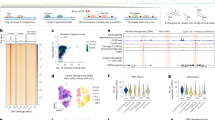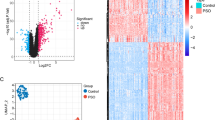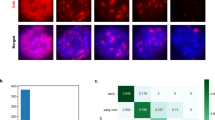Abstract
Cells remarkably take a specific differentiation path among the multiple possibilities that can arise through the multi-dimensional regulation of genome activities. Such deterministic processes suggest the existence of cellular attractors. However, the origins and drivers of the attractors still remain elusive. Here we analyzed the temporal neutrophil differentiation microarray data for two different stimuli, dimethyl sulfoxide (DMSO) and all-trans-retinoic acid (atRA), and expressed their collective dynamics by temporal Pearson correlation and mutual information coordinates. We constructed ensemble of the genes which showed reduction of correlation fluctuations following the inverse square root law. Evaluating their temporal probability density distributions resulted in the emergence of distinct high density localizations from non-localized low density spread distributions, forming attractor cores for both atRA and DMSO. These attractor cores overlapped, pointing to the existence of a neutrophil cell fate attractor. Notably, we found the localizations of correlation distributions for the majority of lowly expressed genes (LEGs) ensembles overlapped with the whole genome attractor cores, while the remaining genomes’ localizations did not overlap. Therefore, we postulate the existence of genetic vehicle, made up mainly of LEGs, for the guidance of cell fate.
Similar content being viewed by others

Article PDF
Author information
Authors and Affiliations
Corresponding authors
Rights and permissions
About this article
Cite this article
Tsuchiya, M., Piras, V., Tomita, M. et al. Genetic vehicle comprising majority of lowly expressed genes guides cell fate decision. Nat Prec (2010). https://doi.org/10.1038/npre.2010.4401.1
Received:
Accepted:
Published:
DOI: https://doi.org/10.1038/npre.2010.4401.1


